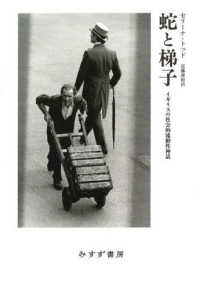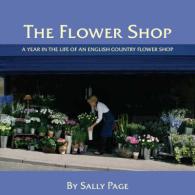- ホーム
- > 洋書
- > 英文書
- > Architecture
Full Description
Building Sites addresses the urgent need to advance the critical understanding of relations between architectural design and the labour of building. While recognising that in many parts of the world building takes place through self-organised processes and traditional skills, the book questions a central and problematic omission in architectural discourse, education and practice - the production of buildings and the erasure of construction labour entailed by that omission. Through its engagement with the groundbreaking work of the architect and theorist Sérgio Ferro, who developed a history of architecture 'seen from the building site', the book sets out a programme for a new field of Production Studies for architecture and other disciplines.
First, the field requires careful research into the production of the built environment - at the construction site, in the factory, in the design office and beyond. This volume explores historical and contemporary cases from Brazil, the UK, Yugoslavia, Germany, India, Mexico and the USA. Second, the book asks why the disciplinary silencing of production prevails. In Ferro's view, the tendency of architectural discourse to ignore issues of labour and processes of construction is no mere oversight but rather a structural necessity for maintaining the profession's capacity to act 'on' and 'over' the building site, a necessity arising organically from the development of capitalism. Turning also to Morris, Harvey, Chakrabarty and Malm, the collection provides the first sustained English-language engagement with Ferro's theories and critiques. Chapters on radical pedagogies, unions and political alliances, and alternative forms of building take the third step - to respond to contemporary crises. Production Studies must mobilise its understanding to seek alternatives and work towards change.
Contents
INTRODUCTION: SETTING AN AGENDA 1. Introduction: Building a Field of Production Studies 2. Translation as Production 3. Challenging Design Ideology: Reframing Architectural Production and the Design-Labour Relation SECTION I: PATHS TO PRODUCTION STUDIES: FERRO AND HIS INTERLOCUTORS 4. The Building Site and the City: Radical Criticism and Emancipation in Sérgio Ferro and David Harvey 5. Sérgio Ferro, William Morris and a New Field: Architecture, cultural studies and production studies SECTION II: TOWARDS EMANCIPATORY PRACTICES 6. Unionization as a Political Issue: The Debate in the Architects' Union of São Paulo (1972-1981) 7. A Work Encampment Project (1981), by Rodrigo Brotero Lefèvre 8. Masters of Detachment: Lingering on the Self-management Building Site 9. The International Workers of the World in the American Building Industry, 1905-1937 SECTION III: FROM THE BUILDING SITE 10. Absent voices, absent lives: articulating building workers in architectural production 11. Timber houses and favela carpenters in Brazilian Nordeste: An architectural history of production 12. The Construction of Alienated Labour and the Alienation of Construction Labour: Mexico, 16TH Century 13. Life-worlds / Death-worlds in the temple building industry of western India SECTION IV: LABOUR, MATERIAL, TECHNOLOGY 14. New Sites of Labour: Women and building products in the interwar period in the UK 15. A feminist reading of the construction site: learning with women builders in Mata dos Crioulos 16. The Material as a Source for the History of Architecture SECTION V: PRODUCTION AND PEDAGOGIES 17. Construction Technology for Building Autonomy 18. Weaving Sérgio Ferro's Web: Production Pedagogies in São Paulo (1963-1972) 19. The Useful Student: Perpetuating 'Separated Design' in Handbooks for Architecture Students 20. From artist-architect to salaried architect: The examination of professional practice in West Berlin, 1967-1977 SECTION VI: POLITICS AND THE POLITICAL ECONOMY OF PRODUCTION 21. Fire-Regimes of Grenfell: On construction and combustion 22. Remembering Production: Favela Museums, Building, and the Production of Space 23. Considering Art's 'Building Site' for Production Studies: The Case of Art Fabrication Afterword







